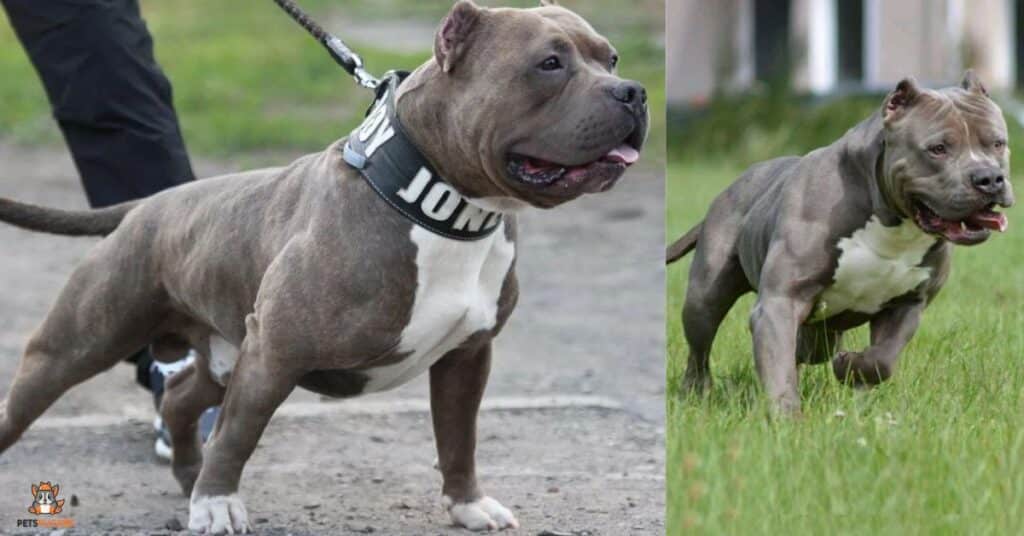A Pocket Bully is a small hybrid dog that combines the American Bully and Patter dale Terrier breeds, known for its compact size, muscular build, and friendly temperament. It typically weighs between 10 to 25 pounds and has a lifespan of 10 to 13 years. Pocket Bullies have a moderate exercise requirement and enjoy daily walks and playtime.
They have a smooth, short coat that is easy to groom, requiring regular brushing to keep it healthy and shiny. Due to their friendly nature, they make loyal companions and are suitable for families with proper training and socialization. Potential owners should be aware of common health issues like skin allergies and hip dysplasia, ensuring regular veterinary care for a happy and healthy Pocket Bully.
What is a Pocket Bully?
A Pocket Bully is a hybrid dog breed that combines the American Bulldog and the American Pit Bull Terrier. Here are some key points about Pocket Bullies:
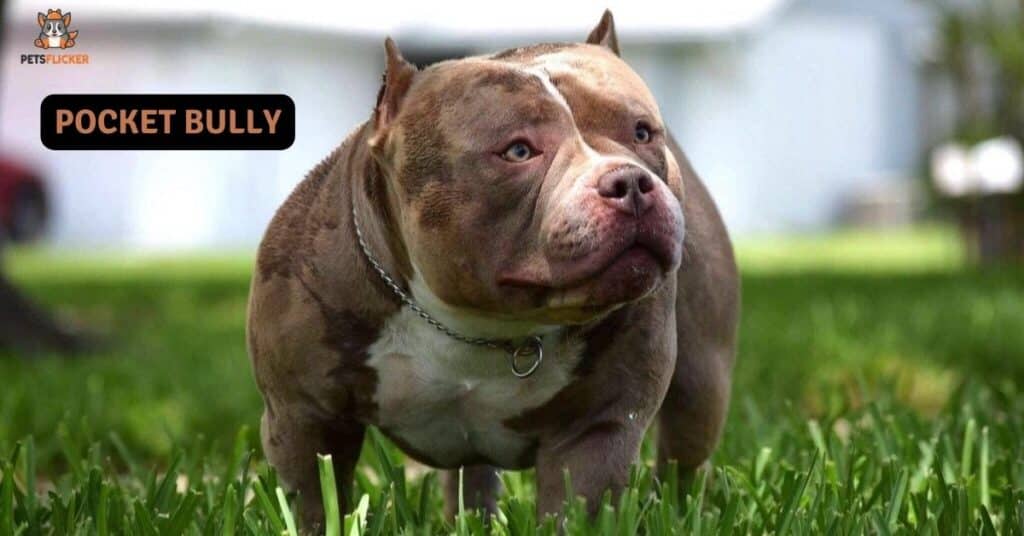
- They are known for their compact size, muscular build, and friendly temperament.
- The breed typically stands between 13 and 17 inches tall at the shoulder, with a short and smooth coat that comes in various colors.
- Pocket Bullies are relatively new and have been developed through selective breeding of American Pit Bull Terriers, American Staffordshire Terriers, and other Bully breeds.
- Despite their appearance, Pocket Bullies have a gentle and playful nature, making them excellent family pets.
- They are easy to train and enjoy learning new skills, making them versatile companions for various activities.
Overall, Pocket Bullies are cherished for their unique blend of traits and make wonderful additions to loving households.
Pocket Bully Breed History
The Pocket Bully breed has a relatively recent history, emerging between 1980 and 1990 in the United States. This period marked the development and recognition of the breed as a distinct type of American Bully.
Since 2013, the United Kennel Club (UKC) has officially recognized the Pocket Bully as a breed, while the American Bully Kennel Club (ABKC) acknowledged them earlier in 2004, highlighting their growing acceptance and status within the dog breeding community.
Why The Pocket Bully Was Bred
The Pocket Bully was specifically bred to combine the favorable traits of the American Pit Bull Terrier and the Patterdale Terrier, aiming to create a well-rounded companion dog.
This breed was developed to possess a friendly and affectionate temperament, making them suitable for families and individuals seeking a loyal and loving pet.
The Pocket Bully was also bred to have a moderate energy level, making them adaptable to different living environments, including apartments and houses with small yards.
Breeders focused on enhancing the Pocket Bully’s physical characteristics, such as strong bones and a muscular build, contributing to their distinctive appearance and robust stature.
Do You Need a Calming Bed for your Pocket Bully?
A calming bed can provide comfort and relaxation for your Pocket Bully, especially if they are prone to anxiety or stress. These beds are designed to reduce anxiety and promote better sleep quality for your furry companion.
Related Article: How Long Can A Dog Hold Its Breath Underwater?
What Does the Pocket Bully Look Like?
The Pocket Bully boasts a robust and muscular build, showcasing a stocky appearance attributed to its broad chest and well-proportioned physique.
Their physical attributes ideally include a nose that is not brachycephalic (short-nosed) to ensure unobstructed breathing and overall health. Despite their short legs, Pocket Bullies should move with confidence and agility, reflecting their muscular strength and power.

It’s crucial that their muscles are well-developed but not overly so, ensuring they maintain an even and smooth stride without any hindrance to mobility or movement. This breed’s appearance exudes a blend of strength, agility, and proportionality, making them visually distinctive and appealing.
Pocket bully fun facts
- Pocket Bullies are also known as “micro bullies” or “pocket pit bulls,” reflecting their small size and pit bull lineage, contributing to their popularity.
- They are a hybrid breed resulting from crossing an American Bully with a British Patterdale Terrier, giving them a distinctive appearance and temperament.
- Despite their rising popularity, major kennel clubs like the American Kennel Club (AKC) and United Kennel Club (UKC) have yet to officially recognize them as a separate breed.
- Pocket Bully owners and breeders are actively working to increase visibility and promote awareness of this unique breed.
Pocket Bully Breed Colors
| Color | Description |
|---|---|
| Black | Common color, can be solid black or with white markings |
| Blue | Ranges from light grayish-blue to deep dark blue, often with white markings on chest and feet |
| Brindle | Pattern of stripes in colors like brown, black, and gray, creating a mixed coat with striped patterns |
| Chocolate | Dark brown coat ranging from light milk chocolate to deep dark chocolate, often with white markings |
| Fawn | Light tan or beige color, can be solid or with white markings |
| Lilac | Light grayish-purple coat, usually with white markings on chest and feet |
| Merle | Color pattern with mixtures of blue, black, and brown, creating a marbled coat pattern |
| Red | Ranges from light reddish-brown to deep dark red, often with white markings on chest and feet |
| Tricolor | Mixture of three colors like black, white, and brown, often with white markings on chest and feet |
Pocket Bully Physical Attributes
- Compact and Muscular Build: Pocket bullies boast a robust and defined physique, showcasing their muscular, lean, and athletic build, which often translates to a low body fat percentage.
- Thick, Wide Head: One of the distinctive features of pocket bullies is their large and broad heads, characterized by a short, wide nose and powerful jaws, contributing to their strong appearance.
- Short, Stocky Legs: These dogs are known for their short and stocky legs, which are well-muscled and add to their sturdy frame, enhancing their overall muscular appearance.
- Broad Chest and Shoulders: With broad chests and shoulders, pocket bullies exude strength and power, emphasizing their muscularity and robust physique.
- Wide, Rounded Rump: Pocket bullies typically have a wide and rounded rump, contributing to their compact and muscular build, further enhancing their athletic appearance.
- Short Tails: Their tails are usually short, either naturally or through docking, which is a common trait among pocket bullies and complements their overall physical attributes.
Pocket Bully Size Guide
Pocket Bullies typically weigh between 10 to 25 pounds and stand anywhere from 14 to 20 inches tall at the shoulders when fully grown. However, these measurements can vary depending on factors like genetics, diet, and exercise.
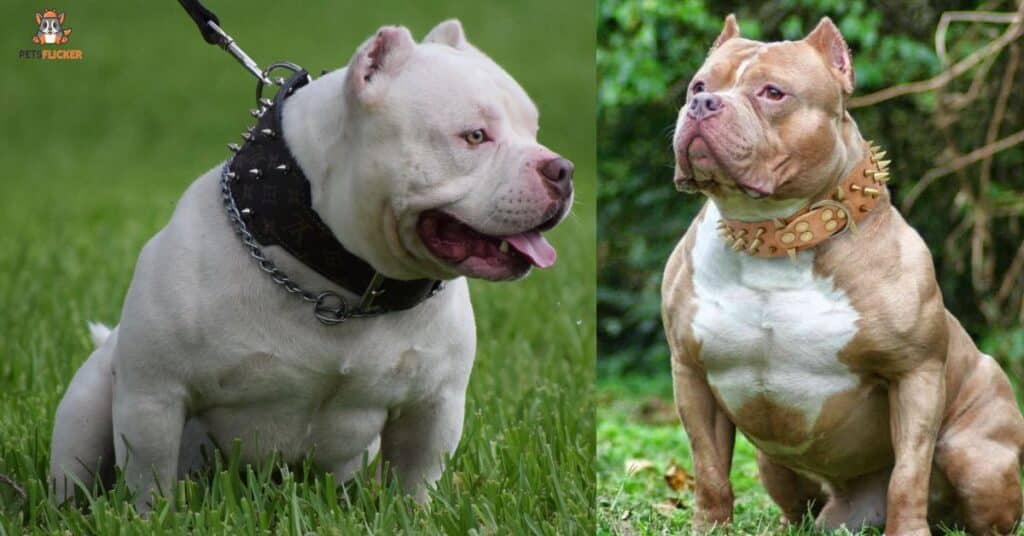
Male Pocket Bullies generally range from 15 to 20 inches in height and weigh around 10 to 25 pounds. Female Pocket Bullies are slightly smaller, with heights between 14 and 19 inches and similar weights of 10 to 25 pounds.
It’s essential for Pocket Bully owners to monitor their dogs’ growth and consult with a veterinarian regularly to ensure they are healthy and receiving appropriate care. Here’s a table summarizing the typical size range for male and female Pocket Bullies:
| Gender | Height Range | Weight Range |
|---|---|---|
| Male Pocket Bully | 15 – 20 inches | 10 – 25 lbs |
| Female Pocket Bully | 14 – 19 inches | 10 – 25 lbs |
Typical Pocket Bully Breed Characteristics
- Pocket Bullies are known for their compact size, typically standing between 13 and 17 inches tall and weighing between 10 to 25 pounds.
- They have a muscular build with a broad chest, giving them a strong and powerful appearance despite their smaller size.
- These dogs often have short, stocky legs and a wide, rounded rump, contributing to their sturdy and robust frame.
- Pocket Bullies usually have a short coat that is easy to maintain, requiring regular brushing and occasional baths to keep them clean and healthy.
- They are known for their friendly and affectionate nature, making them great family pets that are loyal and protective of their owners.
- Pocket Bullies are energetic and playful, enjoying activities such as walks, playtime in a fenced yard, and socializing with both humans and other dogs.
- They are intelligent and responsive to training, particularly when positive reinforcement techniques are used, which helps in shaping their behavior and temperament positively.
- While they may have a protective instinct, proper socialization from a young age can help prevent any potential aggression or territorial behavior.
- Pocket Bullies are known to be good with children and can adapt well to different living environments, making them versatile and adaptable companions.
Height and Weight
Pocket Bullies come in various sizes, with the standard size ranging between 14 to 20 inches tall at the shoulders for males and slightly less for females. They typically weigh between 10 to 25 pounds, depending on factors like genetics and diet.
For the smaller pocket-sized bullies, they can measure between 12 to 16 inches in height and weigh anywhere from 11 to 22 pounds. These variations in height and weight contribute to the diversity within the breed, allowing owners to choose a size that fits their preferences and lifestyle.
It’s essential for Pocket Bully owners to monitor their dog’s weight and ensure they maintain a healthy body condition. Regular exercise, a balanced diet, and regular vet check-ups can help ensure that your Pocket Bully remains in optimal health.
Body Type
Pocket Bullies are known for their friendly and loyal nature, making them excellent companions for families and individuals alike. Their compact size and muscular build give them a sturdy and robust appearance, while their playful and energetic personality makes them delightful pets to have around.
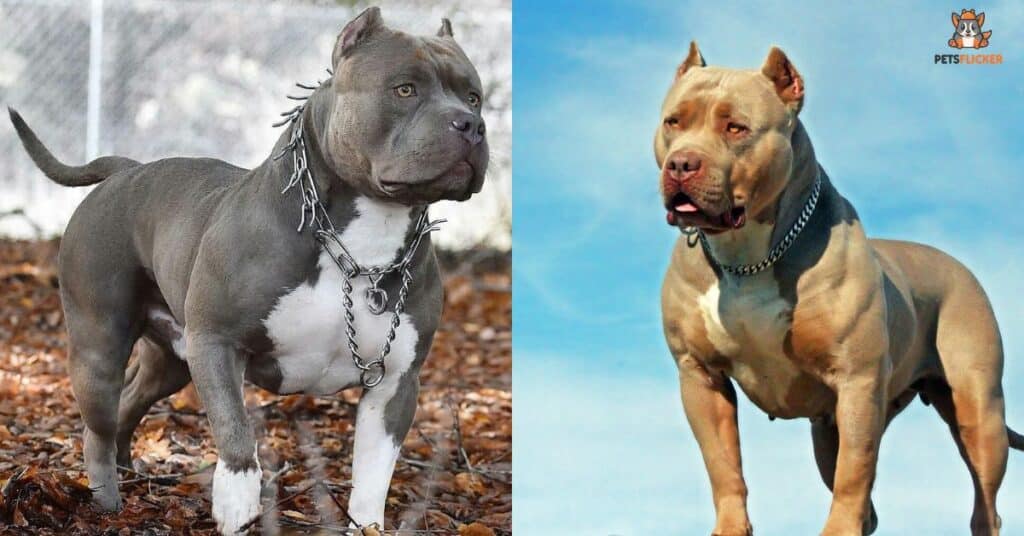
Pocket Bullies are cherished for their trainability, loyalty, and affectionate demeanor, making them a popular choice among dog enthusiasts.
Coat
The coat of a Pocket Bully is relatively low-maintenance, with regular brushing using a soft bristle brush and occasional baths being sufficient to keep it clean and healthy.
Due to their robust physique and wide chest, they are moderate shedders, so regular grooming can help manage shedding. The American Bully breed showcases a variety of coat colors, including black, white, grey, brown, blue, tan, fawn, red, and piebald, with blue being a popular color variation.
Pocket Bullies may have coats that are a bit longer than half an inch, requiring extra care during colder months to ensure they stay warm and comfortable.
Lock Jaw
The notion of ‘lock jaw’ in bully breed dogs is a myth and has been debunked by experts. There is no anatomical mechanism in their jaws that causes them to lock shut.
The belief in ‘lock jaw’ stems from misconceptions about bully breeds’ jaw and tooth anatomy. However, dogs of any breed do not have the physical ability to lock their jaws.
It’s important to dispel this myth to prevent misunderstandings about bully breeds and promote accurate information about canine anatomy and behavior.
Pocket Bully Grooming and Care

Pocket Bullies require regular grooming to keep their coat healthy and shiny. Here are some essential grooming steps and care tips:
Establish a grooming routine: Create a regular schedule for brushing your Pocket Bully’s coat, trimming their nails, and cleaning their ears. This helps maintain their overall hygiene and health.
Brushing their coat: Regular brushing removes tangles, mats, and dirt from their coat, while also distributing natural oils that keep it glossy. Use a soft bristle brush to avoid irritating their skin.
Trimming nails carefully: Take care when trimming their nails to avoid cutting too quickly and reaching the sensitive part of the nail. Regular trimming prevents overgrowth and discomfort for your Pocket Bully.
Cleaning ears: Keep their ears clean to prevent infections, especially since ear infections can be common in this breed. Use a gentle ear cleaning solution recommended by your vet.
Bathing and hygiene: Bathe your Pocket Bully as needed using a mild dog shampoo, and keep their teeth and ears clean. Regular grooming and hygiene practices ensure your Pocket Bully stays healthy and happy.
Calming Dog Bed™ Benefits
The Calming Dog Bed™ offers several benefits for your furry friend:
Improved Sleep Quality: Helps dogs sleep more soundly through the night, leading to better rest and overall health.
Reduction in Stress and Anxiety: Proven to reduce stress and anxiety levels in dogs, promoting a calm and relaxed state of mind.
Enhanced Health and Wellbeing: Supports your dog’s physical and mental wellbeing by providing a comfortable and stress-free resting place.
Safe and Hypoallergenic: Made from non-toxic materials and hypoallergenic fabric, ensuring a safe and healthy environment for your pet.
Easy to Clean: The bed is machine washable, making it convenient to maintain cleanliness and hygiene for your dog’s sleeping area.
Related Article: Can Drug Dogs Smell Mushrooms?
Exercising Your Pocket Bully
Exercising your Pocket Bully is essential for their overall health and well-being. These dogs are known for their energy and vitality, so providing them with regular exercise helps to keep them physically fit and mentally stimulated. Aim for at least 30 to 60 minutes of moderate exercise every day, which can include activities like walks, playtime, and interactive games.
Consulting with your veterinarian is crucial to develop a suitable exercise plan for your Pocket Bully. Vets can assess your dog’s age, health condition, and energy levels to recommend the right amount and type of physical activity.
Incorporating a variety of exercises not only keeps your Pocket Bully physically healthy but also prevents behavioral issues by channeling their energy in a positive way.
5 Top Pocket Bully Exercise Ideas You Will Both Love
Engage in daily walking and running routines to build consistency and keep your Pocket Bully fit.
Play Fetch: Use a ball, frisbee, or small toys for an energetic game in a secure yard or park.
Tug of War: Strengthen the bond with your Pocket Bully while engaging their muscles with a sturdy rope toy.
Hide and Seek: Stimulate mental sharpness and have fun indoors or outdoors with this classic game.
Hiking Adventures: Explore dog-friendly areas together and enjoy the outdoors while keeping active.
Treibball: Try this engaging sport involving herding large exercise balls using verbal commands and body language.
Pocket Bully Lifespan and Health
Pocket American Bully dogs typically live between 11 to 12 years with proper care and attention, which can extend their lifespan.
These dogs are becoming increasingly popular due to their friendly and outgoing nature, making them appealing to many pet owners.
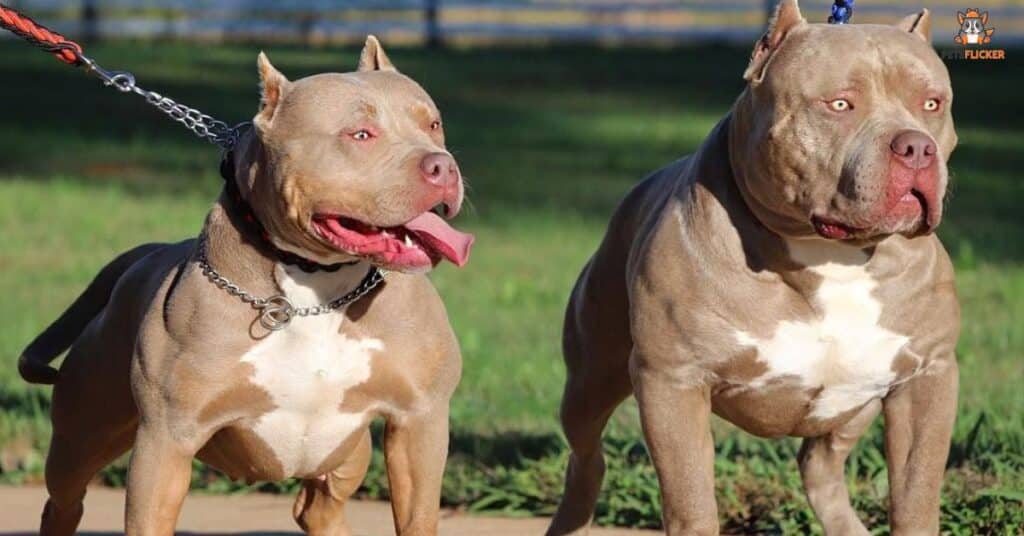
Like their parent breed, American Bullies, Pocket Bullies may be prone to certain health issues such as hip dysplasia and hypothyroidism.
Some common health problems seen in Pocket Bullies include elbow dysplasia, allergies (environmental, food, and medication), skin conditions, and eye problems.
Despite these potential health concerns, Pocket Bullies can lead healthy lives with regular veterinary check-ups, a balanced diet, regular exercise, and a loving home environment.
What Dog Food Should I Feed My Pocket Bully?
When choosing dog food for your Pocket Bully, opt for high-quality, balanced dog food specifically formulated for medium-sized dogs with moderate energy levels.
Look for dog food that contains real meat as the first ingredient, such as chicken, beef, or fish, to provide essential proteins for muscle development.
Avoid dog foods with excessive fillers, artificial additives, or low-quality ingredients, as these may not meet your Pocket Bully’s nutritional needs and could lead to health issues in the long run.
Some popular dog food options for Pocket Bullies are:
- Royal Canin Bulldog: Specifically formulated for bulldogs, promoting digestion and joint health.
- Wellness Complete Health Bulldog Recipe: Supports skin, coat, and immune system health.
- Blue Buffalo Life Protection Bulldog Recipe: Provides essential nutrients and antioxidants for vitality.
When choosing dog food for your Pocket Bully, consider their unique nutritional needs, such as digestion and joint support, skin and coat health, and immune system support. Consult with your veterinarian to select the best food based on your dog’s age, health condition, and dietary requirements.
It’s crucial to ensure that the chosen dog food provides a balanced diet with high-quality ingredients to keep your Pocket Bully healthy and thriving.
Frequently Asked Question
What are some popular dog food options for Pocket Bullies?
Some popular options include Royal Canin Bulldog, Wellness Complete Health Bulldog Recipe, and Blue Buffalo Life Protection Bulldog Recipe.
How should you choose dog food for a Pocket Bully?
Consider their unique needs like digestion, joint support, skin, coat, and immune system health. Consult with a vet for guidance.
What is the typical lifespan of a Pocket Bully?
Pocket Bullies typically live between 11 to 12 years with proper care and attention to health.
What are some common health problems in Pocket Bullies?
Common health issues include hip dysplasia, hypothyroidism, elbow dysplasia, allergies, skin conditions, and eye problems.
What are some exercise ideas for Pocket Bullies?
Activities like daily walking, running, playing fetch, tug of war, hide and seek, hiking, and treibball are beneficial.
How can grooming and care contribute to a Pocket Bully’s well-being?
Regular grooming routines, such as brushing, nail trimming, and ear cleaning, help maintain their health and appearance.
Final Words
The Pocket Bully Breed Guide provides valuable insights into this hybrid breed, combining the American Bully and Patterdale Terrier. It delves into their origin, physical attributes, temperament, exercise needs, grooming requirements, and health considerations.
This comprehensive guide serves as a helpful resource for potential owners, offering a clear understanding of what to expect when caring for a Pocket Bully, including training tips, nutrition advice, and debunking common misconceptions about the breed. Overall, it’s a beneficial tool for anyone interested in welcoming a Pocket Bully into their family.

Elax is a seasoned writer with five years of experience specializing in articles focused on pets. His passion for animals and extensive knowledge shines through his engaging and informative writing style, captivating readers with insights into pet care and companionship. With a knack for crafting compelling content, Elax brings a wealth of expertise to the realm of pet-centric literature on your website.

